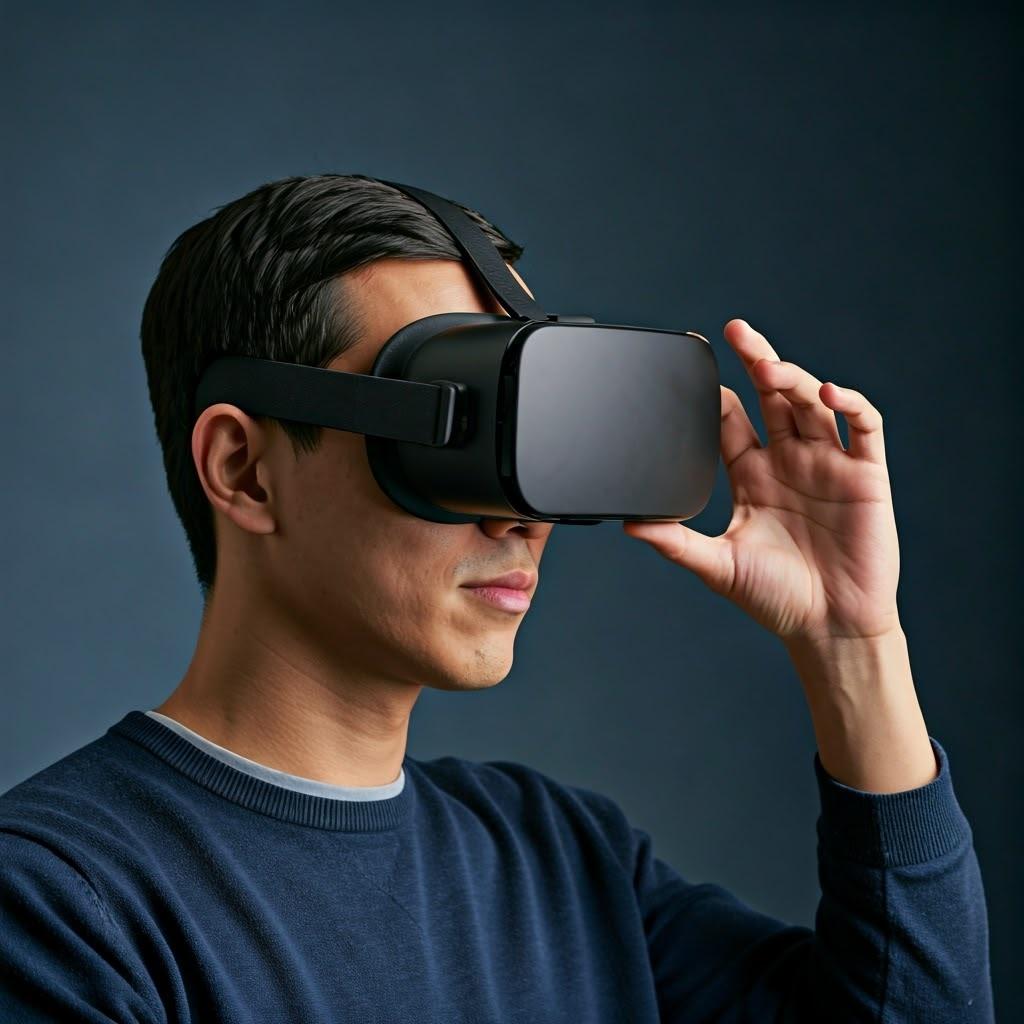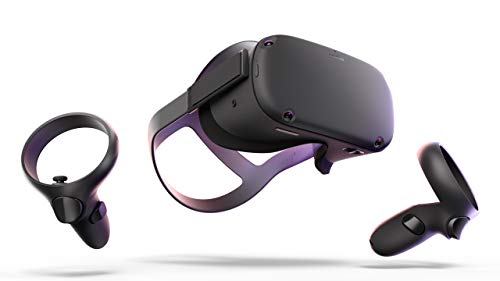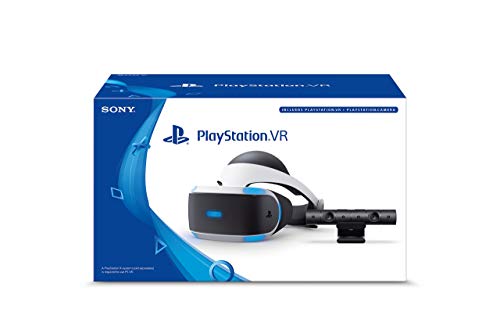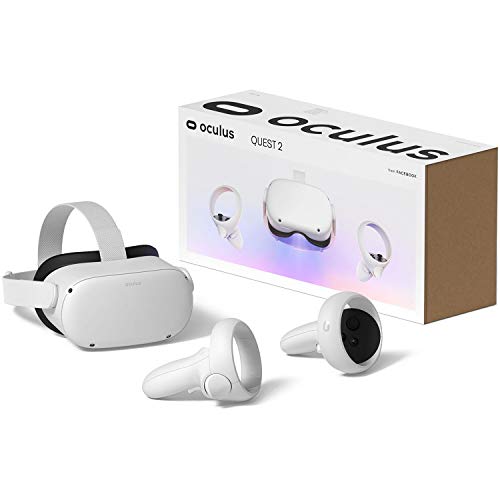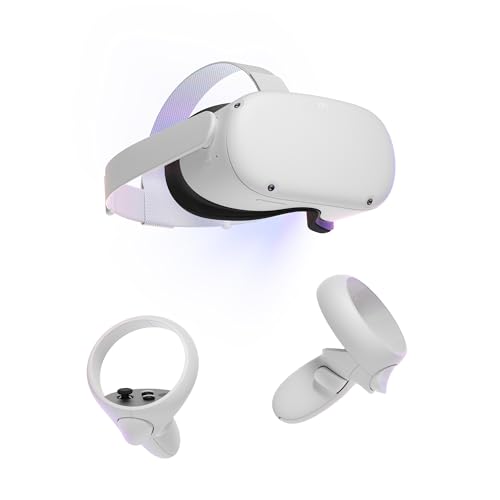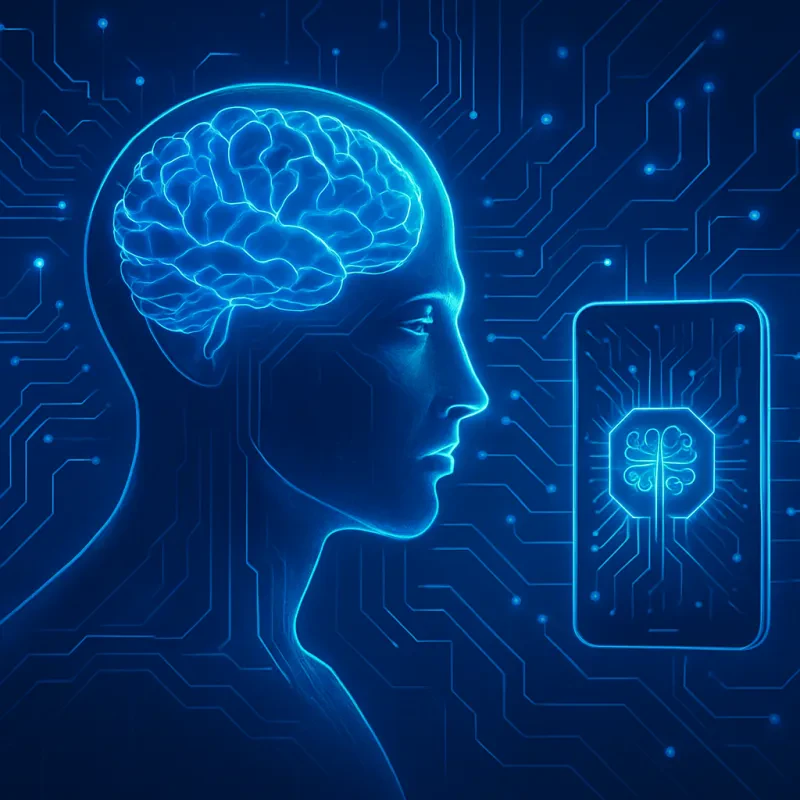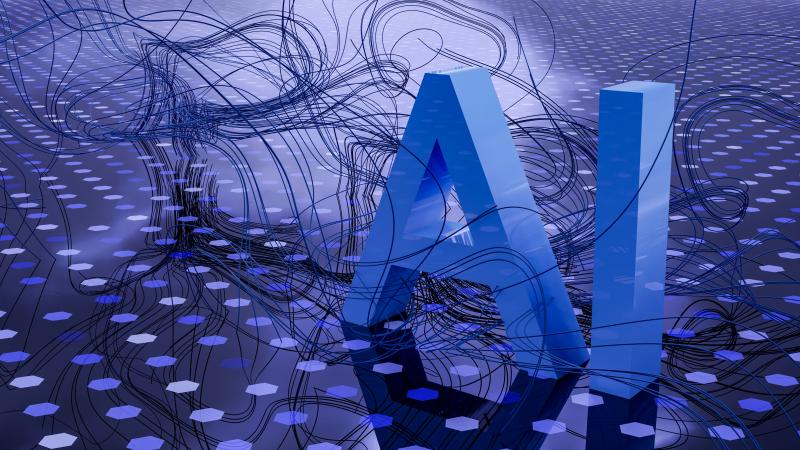Introduction to VR Headsets
Virtual Reality (VR) headsets are pioneering devices that immerse users in a digitally created environment, effectively simulating real-world experiences. These headsets typically consist of a screen or screens, lenses, and sensors that track head and body movements. The core functionality of a VR headset involves delivering a three-dimensional visual experience, often accompanied by sound, to create the illusion of being in another space.
The evolution of VR technology has been remarkable since its inception. Early iterations of VR systems were primarily associated with gaming, where they provided a heightened sense of engagement and interaction within digital environments. However, as technology advanced, the components of VR headsets—such as improved display resolutions, wider fields of view, and enhanced motion tracking capabilities—have expanded their applications beyond gaming.
This shift has opened up a plethora of unique and innovative uses for VR headsets. Industries such as education, healthcare, real estate, and training simulations have begun to recognize the potential of VR for more than mere entertainment. For instance, educators are incorporating VR into their curriculum to offer immersive learning experiences, while healthcare professionals use it for training and therapy. As this technology continues to mature, it becomes increasingly evident that the possibilities extend far beyond traditional gaming applications.
The discussion surrounding VR headsets is no longer confined to gamers and tech enthusiasts; it encompasses a wider audience eager to explore the benefits of immersive environments. In the sections that follow, we will delve deeper into these alternative uses of VR technology, illustrating its versatility and transformative potential across various sectors. Through this exploration, we aim to shed light on the innovative ways VR headsets can enhance everyday experiences.
Immersive Learning Experiences
Virtual reality (VR) technology has emerged as a groundbreaking tool in educational settings, offering an engaging platform for immersive learning experiences. With its ability to create realistic simulations and virtual classrooms, VR provides a unique alternative to traditional educational methods. Through the use of VR headsets, students can step into fully immersive environments that enrich their understanding of complex subjects such as science, history, and art.
For instance, in a virtual biology class, students can explore human anatomy by virtually dissecting a heart or observing cellular processes in a simulated laboratory. This hands-on approach transcends the limitations of physical classrooms, allowing learners to interact with 3D models and conduct experiments in a safe environment. Furthermore, such experiences foster retention and understanding, as students can visualize abstract concepts that are often difficult to grasp through standard textbooks.
In history education, VR can transport students back in time, providing them with a front-row view of historical events and cultures. Through virtual field trips to ancient civilizations or significant historical battlefields, learners can experience history in a way that is both engaging and educational. This level of interaction can stimulate deeper discussions and insights, making the study of history more relatable and impactful.
Art education also benefits from VR, as students can participate in virtual studio classes or gallery tours featuring renowned artists and their works. By utilizing VR technology, students can experiment with various art techniques in a virtual studio, receiving real-time feedback on their creations. This innovative approach not only enhances their artistic skills but also encourages creativity and exploration within a risk-free environment.
Overall, the integration of VR in education represents a valuable advancement, facilitating immersive learning experiences that motivate and inspire students. The potential applications of VR in educational contexts are vast, making it a powerful tool for educators seeking to enhance student engagement and understanding.
Virtual Travel and Exploration
Virtual reality (VR) headsets have transformed the way individuals can experience the world from the comfort of their homes. One compelling application of this technology is virtual travel and exploration, which offers users the opportunity to visit iconic landmarks, natural wonders, and remote locations without the need for physical travel. Utilizing VR headsets, users can embark on immersive journeys to places such as the Great Wall of China, the Amazon Rainforest, or the ancient ruins of Machu Picchu. This mode of virtual tourism not only allows individuals to witness stunning visuals but also offers an educational experience that promotes cultural awareness and appreciation.
The immersive capabilities of VR technology enable users to engage with their surroundings in a manner that traditional media cannot provide. By simulating realistic environments, VR can transport individuals to diverse destinations, where they can explore significant historical sites or marvel at the beauty of nature. Educational institutions and organizations have begun to harness this technology to facilitate interactive learning experiences, allowing students to conduct virtual field trips. This offers a unique advantage for those who may not have the means or ability to travel physically, opening up global education opportunities.
Moreover, virtual travel experiences can often include interactive components that enhance the overall enjoyment and engagement of users. Features such as guided tours led by virtual tour guides or the ability to select specific points of interest allow for a personalized exploration experience. As a result, VR can offer a thrilling adventure that invites users to learn about geography, history, and culture. In conclusion, the potential of VR headsets extends well beyond the realm of gaming; they provide innovative avenues for exploration and learning, enriching individuals’ understanding of the world and its wonders.
Fitness and Exercise Applications
Virtual reality (VR) headsets have expanded their utility beyond gaming, emerging as powerful tools for fitness and exercise. These innovative platforms offer a wide array of applications that transform traditional workout routines into engaging virtual experiences. Fitness enthusiasts can leverage VR technology to enhance their routines, making physical activity not only more enjoyable but also more effective.
One notable aspect of VR fitness applications is their ability to immerse users in a captivating environment that motivates them to move. Programs like “Beat Saber” and “Holofit” allow users to engage in physically demanding activities while enjoying vibrant, interactive worlds. These games require players to strike blocks or navigate through obstacles, effectively providing a full-body workout that incorporates elements of rhythm and coordination.
Moreover, VR applications such as “Supernatural” and “BoxVR” offer guided workouts led by professional trainers. These programs present structured exercise regimes that include various fitness disciplines, from cardio to strength training. Users can select their workout intensity, duration, and even choose from a library of different workout routines to keep sessions varied and exciting.
In addition, VR fitness applications often integrate social features, allowing users to exercise alongside friends or join global challenges. This social aspect can help in fostering accountability and camaraderie among users, making it easier for individuals to stick to their fitness goals. The gamification of exercise presents a unique value proposition that encourages consistent participation and can lead to improved health outcomes.
Ultimately, the use of VR in fitness demonstrates its potential as a versatile platform that enhances the exercise experience. By combining the elements of play, interaction, and community, VR fitness applications are paving the way for a new paradigm in physical wellness. This innovative approach not only combats the monotony often associated with traditional workouts but also helps users achieve their health objectives in an entertaining and effective manner.
Therapeutic Uses of VR Technology
Virtual reality (VR) technology has rapidly evolved into a valuable tool in the realm of therapy and mental health treatment. Its immersive capabilities allow individuals to engage in therapeutic exercises in a controlled environment, making it particularly effective for various psychological challenges. One of the prominent applications of VR in therapy is exposure therapy, predominantly used to treat phobias and anxiety disorders. By exposing patients to virtual simulations of their fears, therapists can guide them through coping mechanisms while ensuring a safe distance from real-life triggers.
Research has shown that exposure therapy using VR can facilitate gradual desensitization to phobic stimuli, such as heights or public speaking. Studies indicate that patients experience reduced anxiety levels and improved coping strategies after engaging in VR exposure sessions. Anecdotal evidence from clinical settings further supports these findings, with numerous therapists reporting significant progress in their clients' conditions post-VR therapy.
Another promising area for the use of VR is in stress relief and mindfulness practices. With the increasing prevalence of stress-related disorders, incorporating VR into therapeutic routines provides a unique approach to relaxation and mindfulness. VR applications often offer tranquil environments designed specifically to reduce stress, such as serene beaches or peaceful forests, allowing users to escape their immediate surroundings and engage in mindfulness exercises. This immersive experience can enhance a user's ability to focus on their breathing and practice meditation, contributing to a sense of peace and mental clarity.
Moreover, case studies involving various demographics, including veterans dealing with PTSD and individuals coping with chronic pain, have highlighted the effectiveness of VR in promoting emotional well-being. Feedback from participants often includes reports of heightened relaxation, decreased symptoms of anxiety, and increased engagement in therapeutic activities. As research progresses, the therapeutic utilization of VR technologies continues to demonstrate its potential as an innovative resource in improving mental health outcomes.
Social Interaction and Virtual Gatherings
The advent of virtual reality (VR) technology has revolutionized the way individuals engage with one another, transcending traditional boundaries of social interactions. VR platforms are increasingly becoming hubs for socialization, enabling users from diverse geographical locations to connect in virtual environments that mimic real-life interactions. These immersive experiences facilitate not only casual meetups but also collaborative endeavors, thereby expanding the realm of networking and social engagement.
One notable application that highlights the potential of VR for social interaction is "AltspaceVR," which offers users a plethora of social events, ranging from comedy shows to community gatherings. This platform allows users to create personalized avatars, interact with others in real-time, and attend events that cater to various interests. Such features diminish the barriers imposed by distance and foster a sense of community among users. Additionally, VRChat serves as another prime platform for social engagement, where users can explore thousands of user-generated worlds, participate in discussions, and even celebrate special occasions with friends and family, regardless of their physical location.
Beyond casual conversation and entertainment, VR technology also paves the way for professional networking. Platforms such as "Rumii" and "Spatial" provide virtual workspaces where professionals can gather, brainstorm, and execute projects collaboratively. These environments encourage creativity and productivity, as users can interact with their colleagues in a shared space that promotes engagement and teamwork. The use of VR for professional and social purposes enhances the overall experience, offering an innovative approach to networking and building relationships.
Incorporating virtual reality into social interactions not only enriches the way individuals connect but also illustrates the endless possibilities for social engagement in the digital age. By creating immersive experiences that unify people across the globe, VR platforms are transforming the landscape of socialization and collaboration.
Creative and Artistic Expression
Virtual reality (VR) has emerged as a transformative medium for artists, designers, and content creators, allowing them to delve into innovative forms of artistic expression that were once unimaginable. With the immersive capabilities of VR, creators can explore dimensions of creativity that extend beyond traditional methodologies.
One of the most compelling applications of VR in art is VR painting. Platforms like Tilt Brush enable artists to paint in a three-dimensional space, providing them with the freedom to manipulate color, depth, and motion in ways that flat canvases cannot replicate. This not only enhances the visual experience but also blurs the boundaries between the artist and their creation. Artists can immerse themselves in their work, experiencing their art from multiple angles and perspectives, deepening their connection to their projects.
Moreover, VR sculpting has gained popularity, allowing creators to construct intricate three-dimensional pieces using intuitive hand gestures. Tools like Oculus Medium invite users to mold virtual clay, creating stunning sculptures that can be manipulated and refined with immense detail. This use of VR for sculptural work introduces a unique interplay of physicality and digital innovation, offering artists a platform to expand their conceptual horizons.
Interactive installations represent another exciting frontier for VR in the art world. These installations invite audiences to engage with art in a participatory manner, fostering a sense of connection and exploration. By transforming the viewer into an active participant, artists can create immersive narratives that resonate on a deeper emotional level. This interaction encourages viewers to reflect on their experiences, allowing for a more personal interpretation of the artwork.
In essence, the adoption of virtual reality in creative fields opens doors to unparalleled artistic possibilities. The capabilities for VR painting, sculpting, and interactive installations exemplify how technology and creativity converge, empowering creators to craft evocative experiences that captivate and inspire. This evolution not only highlights the adaptability of artistic expression but also beckons a future where VR can redefine how we perceive and engage with art.
Enhancing Professional Development and Training
Virtual Reality (VR) technology is revolutionizing the landscape of professional development and training across various industries. By simulating real-world environments, VR provides an immersive learning experience that significantly enhances skill acquisition and retention. This innovative approach to training allows professionals to practice and refine their skills in a safe and controlled setting, ultimately leading to better outcomes in high-pressure situations.
One of the most notable applications of VR in professional training can be seen in the medical field. Surgeons and medical professionals are utilizing VR simulations to practice complex procedures. These simulations give them the opportunity to hone their skills without the risk of harming real patients. The hands-on experience gained through VR training can enhance their proficiency and confidence, leading to improved patient care standards.
Additionally, the aviation industry has embraced VR for pilot training. Flight simulators that incorporate VR technology allow aspiring pilots to experience realistic flight scenarios, including emergency situations, without leaving the ground. This method not only sharpens their response to potential crises but also reduces training costs and time associated with traditional flight training methods.
Corporate training programs have also begun to integrate VR as an effective tool for employee onboarding and skills training. Companies can create tailored VR experiences that simulate workplace scenarios, encouraging employees to engage in problem-solving and decision-making activities. This immersive training approach has been particularly effective in industries such as retail and hospitality, where customer interactions can be simulated to refine interpersonal skills.
The construction industry is yet another sector benefiting from VR training. Workers can experience virtual construction sites, learning about machinery operation and safety protocols without any physical danger. Such training ensures that employees are well-prepared before they step onto an actual site.
Overall, the adoption of VR for professional development is indicative of its versatility and effectiveness in facilitating learning across various industries.
The Future of VR: Trends and Innovations
The evolution of virtual reality (VR) technology has been marked by significant advancements, which have consistently shaped its applications beyond the gaming industry. As we look toward the future, several emerging trends and innovations demonstrate the potential of VR to infiltrate various sectors, ultimately enhancing the everyday experiences of users.
One prominent trend is the integration of artificial intelligence (AI) within VR environments. This synergy allows for more immersive experiences, offering personalized interactions and adaptive learning environments. For example, in education, AI can tailor lessons and simulations to meet individual student needs, making learning more effective and engaging. As educational institutions continue to adopt VR, we can expect more interactive and realistic training modules for various fields such as medicine, engineering, and even the arts.
Another exciting development is the rise of social VR platforms. These platforms enable users to connect and interact in a shared virtual space, fostering collaboration and community engagement. This application has profound implications for remote work and virtual meetings, allowing teams to collaborate in a more immersive setting than traditional video conferencing. Companies are increasingly investing in this technology to enhance team dynamics and productivity, paving the way for a new normal in workplace interactions.
Health care stands as another vital area where VR is gaining traction. From therapeutic applications for mental health to surgical simulations for training, the possibilities are vast. The ability to create realistic environments for patients undergoing treatment, as well as providing healthcare professionals with hands-on training, is just one of the many innovations being explored. As VR technology continues to mature, the potential to revolutionize healthcare practices becomes increasingly evident.
As these trends unfold, it is clear that the future of VR extends far beyond gaming, offering transformative applications across diverse fields. The potential for innovative uses in education, social interaction, and health care suggests a broader acceptance and integration of VR technology into daily life, promising a more connected and interactive world.
